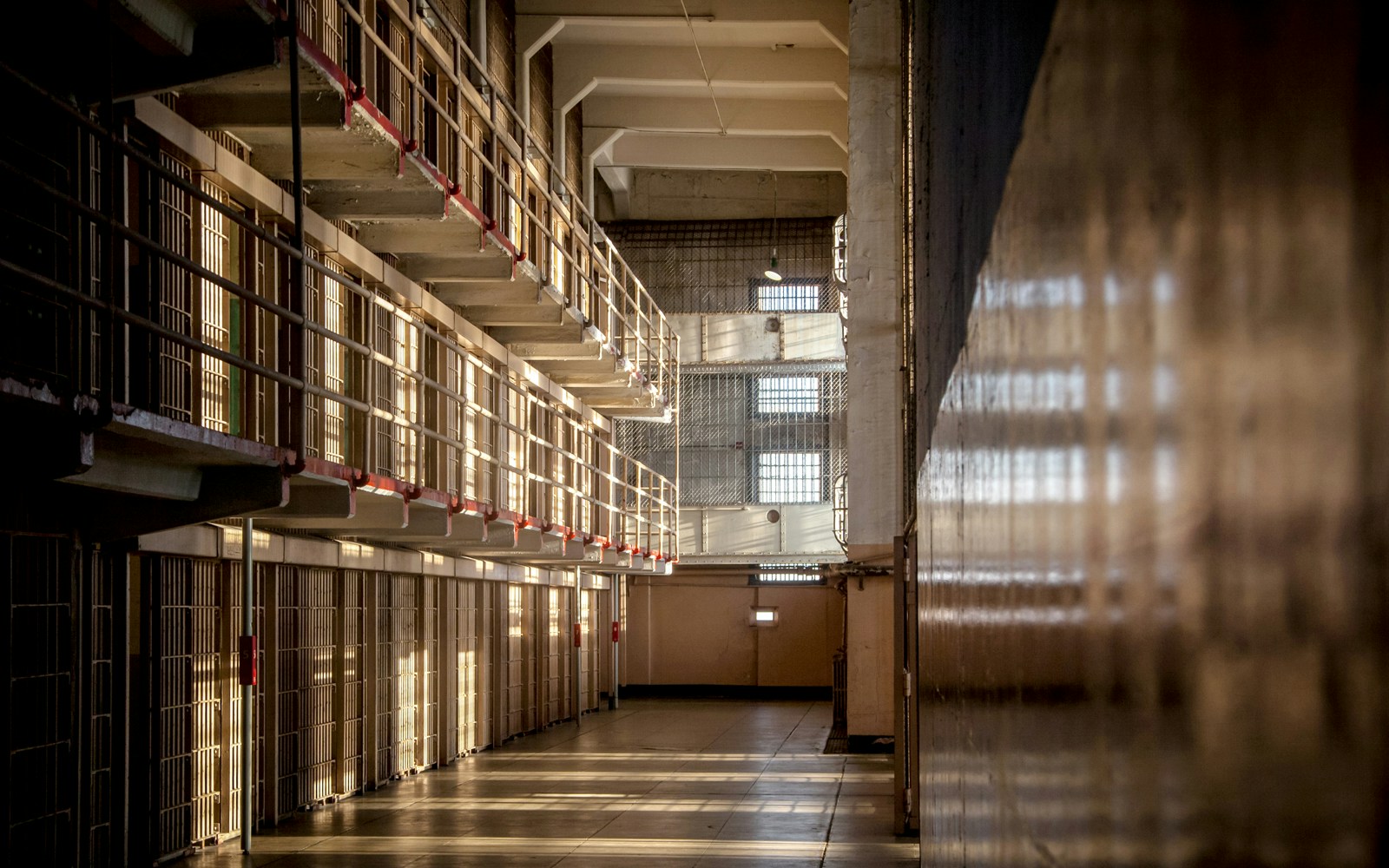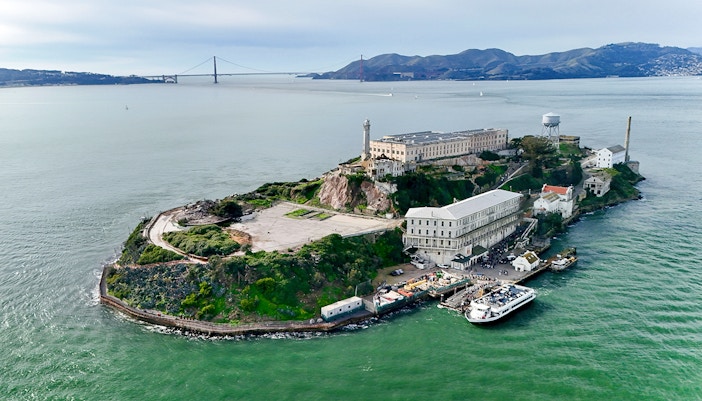Arrive 30 minutes early to check in and get a good spot on the ferry. The ride itself is part of the experience—take in views of the Bay Bridge, city skyline, and Alcatraz as you approach the island.

Walk through the actual cellblocks where inmates like Al Capone and “Machine Gun” Kelly were once held. The audio tour, voiced by real former inmates and guards, takes you back in time with first-hand accounts of daily life, lockdowns, and escape attempts. The cold steel bars, narrow cells, and echoing halls make it feel all too real.
Alcatraz’s most legendary moment was the daring 1962 escape that sparked a nationwide manhunt for Frank Morris and brothers Clarence and John Anglin—and remains unsolved to this day. On the tour, you’ll see the exact cells they tunneled out of, the decoy heads used to fool the guards, and the chilling mystery that still captivates visitors decades later.
Alcatraz offers one of the best panoramic views in the city. From the island’s edge, you can spot the Golden Gate Bridge, the downtown skyline, the Marin Headlands, and the rolling hills of Angel Island—all from a unique, 360° vantage point surrounded by open water.
What was once a barren military outpost is now a protected wildlife refuge. Gardens have bloomed where guards once marched, and seabirds, such as cormorants, gulls, night herons, and egrets, now nest freely on the cliffs. It’s an unexpected side of Alcatraz that surprises many first-time visitors.
The experience begins before you even step on the island. The ferry ride from Pier 33 offers postcard views of the waterfront, bridges, and city skyline. It's a relaxing start—and end—to a visit that feels like stepping into another world.
Alcatraz has worn many hats. Originally used by the U.S. Army in the mid-1800s as a military fortress and detention center, it became a federal prison in 1934. Designed to hold the most dangerous criminals, it operated until 1963 and housed well-known names like Al Capone and George “Machine Gun” Kelly. In 1969, Native American activists occupied the island in a historic protest that lasted 19 months, leaving a legacy that’s still visible in graffiti and guided programming today.

Location: Top of the island
This is the main draw of any visit. Once the heart of the prison, the Cellhouse still holds rows of tiny cells, metal doors, and narrow walkways. The award-winning audio guide leads you through the block, sharing stories of escape attempts, lockdowns, and daily life inside. The voices of former inmates and guards make it feel personal and real.




⏱ Total duration: 2.5 to 3 hours (including ferry travel)
📍Start point: Pier 33 Alcatraz Landing, San Francisco
👟 Tour style: Self-paced walking, audio-guided






Alcatraz held some of America’s most notorious criminals. Al Capone, George “Machine Gun” Kelly, and Robert Stroud—known as the “Birdman of Alcatraz”—were among the high-profile inmates. Each brought national attention to the prison during their time there.
There were 14 known escape attempts involving 36 inmates. Most were caught or killed, but in 1962, three men—Frank Morris and the Anglin brothers—vanished without a trace. Their fate remains unknown, fueling decades of speculation.
Alcatraz’s isolation made it ideal. Surrounded by cold, fast-moving currents, it was believed to be escape-proof. Before it became a federal prison in 1934, it served as a military fort and detention center.
Yes. You can walk through actual cell blocks, including solitary confinement units. The audio guide takes you into the heart of the Cellhouse, where you'll see how inmates lived—and sometimes, tried to escape.
Not usually. While former inmates and guards have returned for talks in the past, these events are rare. Most personal stories are now shared through the audio tour and exhibit materials curated by the National Park Service.
In 1969, Native American activists occupied Alcatraz to protest federal policies and demand land rights. The 19-month occupation became a landmark event in Indigenous activism. Graffiti and signs from that protest are still visible today.
Expect moderate walking and an uphill climb. The path from the dock to the Cellhouse rises about 13 stories. A free mobility tram is available for visitors who need assistance.
Today, Alcatraz is a protected site managed by the National Park Service. It serves as a museum and historical landmark, preserving both the prison era and the island’s layered history, from military use to Native activism and beyond.
Yes. Over the years, visitors and former staff have reported strange sounds, unexplained cold spots, and eerie sensations—especially in the Cellhouse. While nothing is officially confirmed, Alcatraz’s haunting past makes it a hotspot for ghost stories.












